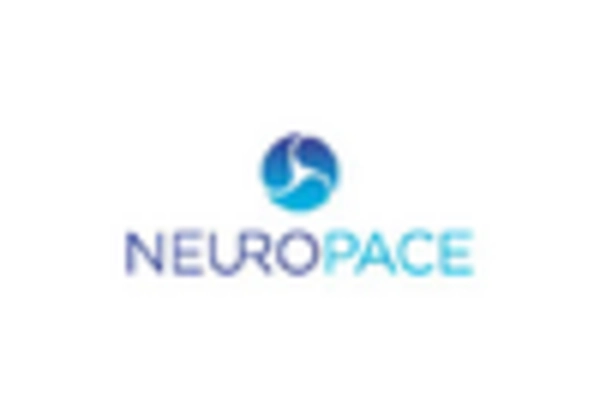Advancements in Medical Technology
Technological advancements in medical devices and treatment methodologies are significantly influencing the traumatic brain-injuries-treatment market. Innovations such as neuroimaging techniques, robotic-assisted surgeries, and advanced rehabilitation technologies are enhancing the precision and effectiveness of TBI treatments. For instance, the use of functional MRI and CT scans allows for better diagnosis and monitoring of brain injuries, leading to more tailored treatment plans. The market is projected to grow as these technologies become more integrated into clinical practice, with estimates suggesting a compound annual growth rate (CAGR) of around 7% over the next few years. This growth reflects the increasing reliance on technology to improve patient outcomes in TBI cases.
Government Initiatives and Funding
Government initiatives aimed at improving brain injury treatment and prevention are playing a crucial role in the traumatic brain-injuries-treatment market. Federal and state programs are increasingly allocating funds for research and development in TBI treatments, which is expected to enhance the availability of innovative therapies. For example, the National Institutes of Health (NIH) has been actively funding studies focused on understanding the mechanisms of brain injuries and developing new treatment protocols. This financial support not only fosters innovation but also encourages collaboration between academic institutions and healthcare providers, ultimately leading to improved treatment options for patients suffering from TBIs.
Growing Focus on Rehabilitation Services
The growing emphasis on rehabilitation services for TBI patients is a significant driver of the traumatic brain-injuries-treatment market. As awareness of the long-term consequences of TBIs increases, there is a corresponding rise in demand for comprehensive rehabilitation programs that address cognitive, physical, and emotional recovery. Facilities specializing in neurorehabilitation are expanding, offering tailored therapies that include physical therapy, occupational therapy, and psychological support. This trend is likely to continue, with market analysts predicting a steady increase in the rehabilitation segment, which could account for a substantial portion of the overall market revenue in the coming years.
Increased Collaboration Among Stakeholders
The traumatic brain-injuries-treatment market is witnessing increased collaboration among various stakeholders, including healthcare providers, researchers, and pharmaceutical companies. This collaboration is fostering the development of multidisciplinary approaches to TBI treatment, which may lead to more effective and holistic care for patients. Partnerships between academic institutions and industry players are particularly noteworthy, as they facilitate the translation of research findings into clinical practice. Such collaborations are expected to enhance the pipeline of new therapies and interventions, thereby driving market growth. The collective efforts of these stakeholders are likely to result in improved treatment outcomes and a more robust market landscape.
Rising Incidence of Traumatic Brain Injuries
The increasing incidence of traumatic brain injuries (TBIs) in the US is a primary driver for the traumatic brain-injuries-treatment market. According to the Centers for Disease Control and Prevention (CDC), TBIs contribute to a significant number of hospitalizations and fatalities annually. The growing awareness of the long-term effects of TBIs, such as cognitive impairments and emotional disturbances, has led to heightened demand for effective treatment options. This trend is further supported by the aging population, which is more susceptible to falls and accidents that result in TBIs. As a result, healthcare providers are focusing on developing innovative treatment modalities to address the needs of this patient demographic, thereby propelling the market forward.

















Leave a Comment